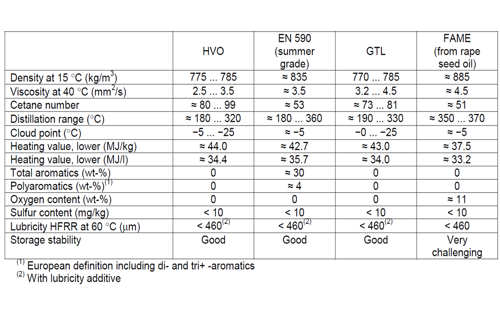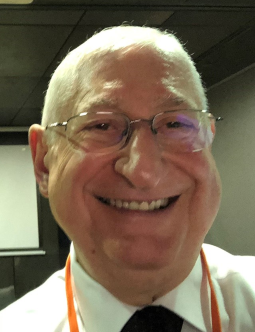2021 AFPM Annual Meeting Virtual Edition: Green bunkers, eco-bunkers, bio-bunkers, renewable bunkers...caveat emptor!
ARA BARSAMIAN, LEE ELISEO CURCIO and DANIEL BYEONG CHAN SON, Refinery Automation Institute LLC
With increased efforts to save the planet from global warming and in recognition of the need to protect the environment, the UN and many countries have been considering and implementing stricter regulations for greenhouse gas, sulfur dioxide (SO2) and nitrogen oxides (NOx) emissions regulations. This is pressuring the International Maritime Organization (IMO) and other standards organizations to adopt stricter rules to be followed by fuel suppliers, shipowners, oil terminals and refineries.
The pressure to find solutions to become more environmentally friendly is pushing the industry toward zero emissions targets. Potential solutions that are being heavily researched are alternative fuels. However, this is an idealized solution, since many alternative fuels are not yet ready to be utilized as bunker fuel replacement—e.g., the global infrastructure is not ready for liquefied natural gas (LNG), and not enough research has been conducted to utilize hydrogen, methanol or ammonia. Nevertheless, among these alternative fuels, biofuel has caught the attention for its potential to reduce greenhouse gases and its ease of manufacturing.
Biofuel as a possibility has been promoted as a possible alternative fuel due to its promise to significantly reduce CO2 emissions, limit the sulfur level in fuel to 0.5%, provide higher vehicle mileage and improve lubricity. Saving the planet while burning fuel with superior mileage almost sounds too good to be true.
Caveat emptor—buyer beware! To understand the pros and cons of biofuels, it is important to examine what they really are. Two classes of biofuels are commercially available on a large scale:
- First-generation bio-diesel, which is fatty acid methyl ester (FAME)
- Second-generation bio-diesel, which is renewable diesel.
Both generations of biofuels are produced by processing biomass (FIG. 1). FAME is produced through a process called trans-esterification, which utilizes catalysts and methanol to transform vegetable oil into FAME. Renewable diesel is produced through hydrogenation to produce hydrotreated vegetable oil (HTVO) or through the Fischer-Tropsch synthesis process to transform vegetable oil into biomass-to-liquid Fischer-Tropsch (BTL synthetic diesel).

FIG. 1. Pathways for bio-diesel and renewable diesel.
These two generations of biofuels have very different characteristics, which ISO8217 bunker specification also clearly distinguishes (TABLE 1). FAME diesel is relatively inexpensive to make, but it is not necessarily carbon-neutral. Most importantly, FAME, with its superior lubricity properties, can cover engine components with a sticky gum-like material that promotes corrosion and mechanical damages. This became the fundamental basis for ISO8217-17 Section 5.1 to specifically ban the deliberate blending of FAME in RM-grade fuel (residual bunker fuel)—that FAME level should not exceed the “de minimis” level or 0.5 vol%.

TABLE 1. Properties of biofuels vs. conventional fuel.
Conversely, renewable diesel’s properties are indistinguishable from those of petroleum-derived diesel. Because it does not cause damage to the engine, there is no limit to the amount that can be used in marine fuels, whether marine gasoil or residual bunkers. Additionally, compared to FAME, it has higher quality because it has cleaner burning (higher cetane), its production has a lower carbon GHG footprint intensity, and it can use a wider range of feedstock, such as algae.
A number of companies have advertised “green bunkers,” “eco-bunkers” and “bio-bunkers.” Some of these companies use renewable diesel in their RMG bunkers and comply with ISO8217. The renewable diesel is used as a diluent of residues, such as ATB, VTB and VBKB, generally in less than 10 vol% with a healthy dose of LCO and slurry to maintain aromaticity. Other companies are using FAME-type biodiesel in bio-bunkers, and it is unclear from their descriptions whether it is a marine distillate with FAME or RM grade with FAME, the latter of which is in violation of ISO8217 Section 5.1
So, watch out for misleading information when it comes to “bio.” Using fuel containing FAME is not only against the regulation, but will destroy engine parts. Need more advice on this issue? Refinery Automation Institute provides consulting services and is covering this subject in detail in our new online bunker blending course. Feel free to contact us at info@refautom.com.
About the authors:
ARA BARSAMIAN is the President and CEO of Refinery Automation Institute LLC (RAI) and has more than 50 years of experience in gasoline, diesel and biofuels blending operations and technology. Recently, he has been involved in the IMO 2020 bunker blends, recipes and ISO 8217 specs. Earlier in his career, he was a Group Head with Exxon Research & Engineering Co., President of 3X Corp. and Vice President of ABB Simcon, all in the area of fuels blending. Barsamian holds BS and MS degrees in electrical engineering from City University of New York.

LEE ELISEO CURCIO is a chemical engineer and CFO at RAI. For the past seven years, he has worked in the areas of gasoline, diesel, bunker blending, ethanol nonlinear property correlations and octane boost, and naphtha and butane blending. He also teaches the gasoline, diesel and bunker blending optimization section of RAI’s blending public course. He previously worked at the Catholic University of Louvain in advanced modeling and optimization. He holds BS and MS degrees in chemical engineering with honors from the University of Calabria in Italy.

DANIEL BYEONG CHAN SON is a Blending Engineer at Refinery Automation Institute LLC (RAI). He was involved in the implementation of a crude blend compatibility predictor calculator, a crude assay blend calculator, and with the research of the IMO 2020 bunker availability study update. Son is a member of AIChE and holds a BS degree in chemical engineering from New Jersey Institute of Technology.







Comments